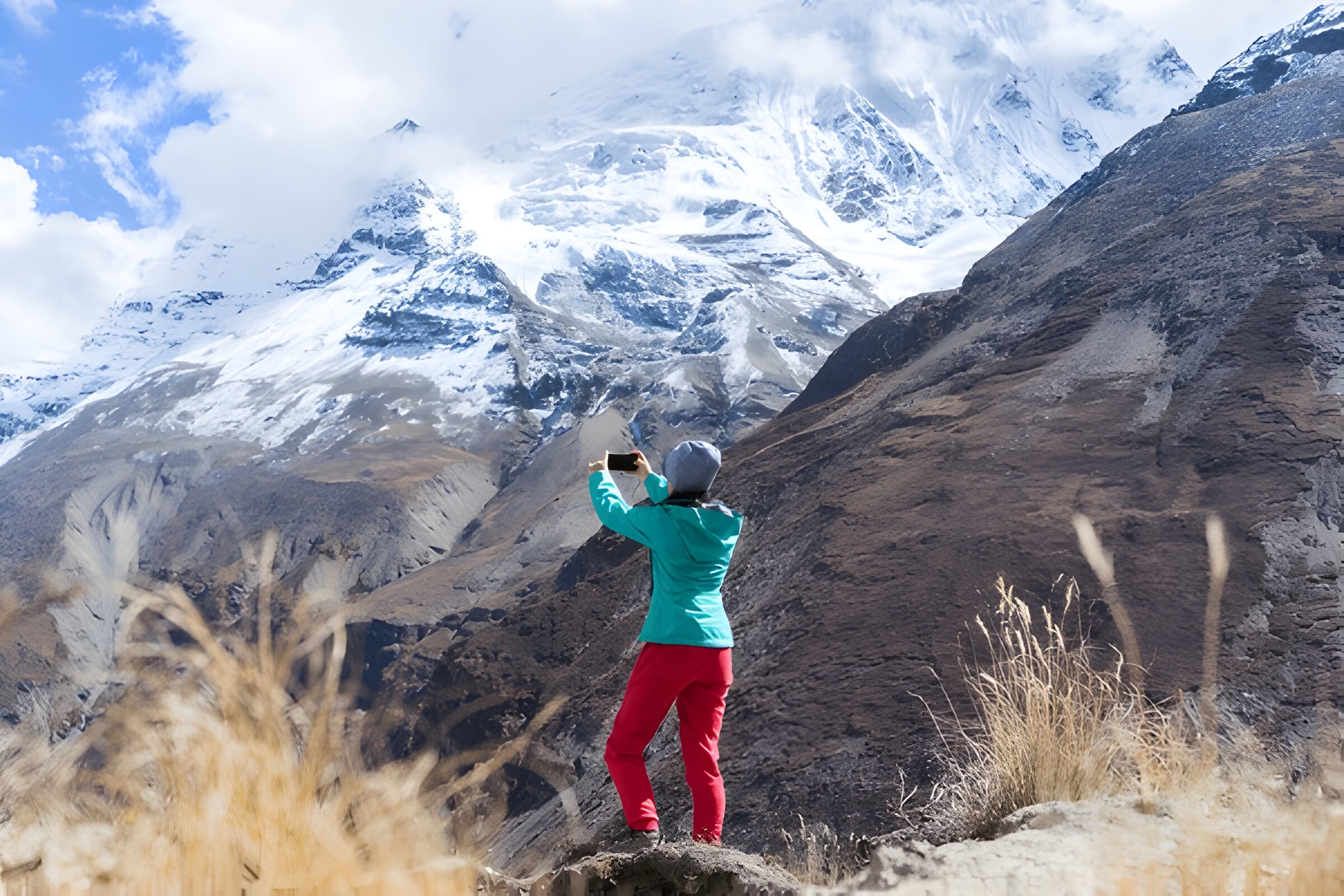Island Peak, also known as Imja Tse, stands at 6,189 meters in the heart of Nepal’s Khumbu region. This peak, often referred to as a “trekking peak,” provides an excellent introduction to high-altitude mountaineering. For many, the Island Peak climb serves as a stepping stone to higher and more technical mountains like Everest or Cho Oyu. Whether you're a seasoned trekker or an aspiring mountaineer, Island Peak offers a challenging yet achievable goal. Here’s everything you need to know about this exciting adventure!
Why Choose Island Peak?
The allure of Island Peak lies not just in its height, but also in its accessibility. Located in the stunning Everest region, this climb allows trekkers to experience the grandeur of the Himalayas without needing highly advanced technical skills. Island Peak provides:
- A Beginner-Friendly Climb: While some technical aspects are involved, like using crampons and ropes, the climb is manageable for most physically fit individuals with basic mountaineering training.
- Stunning Views: At the summit, climbers are rewarded with breathtaking panoramic views of Lhotse (8,516 m), Nuptse (7,861 m), and even the towering Mount Everest (8,848.86 m).
- Cultural Experience: The journey to Island Peak takes you through traditional Sherpa villages, Buddhist monasteries, and the famed Tengboche Monastery, offering insights into the rich culture of the Khumbu region.
Island Peak Climb Itinerary
Here’s a typical 16- to 18-day itinerary for those aiming to summit Island Peak:
1. Arrival in Kathmandu
After arriving in Nepal’s bustling capital, you’ll spend the day preparing, checking gear, and meeting with your guides and fellow climbers.
2. Flight to Lukla and Trek to Phakding
The adventure begins with an exhilarating flight to Lukla, one of the world’s most exciting airports. From there, a short trek leads you to Phakding.
3-4. Trek to Namche Bazaar
You’ll hike up to Namche Bazaar, the famous Sherpa trading hub. Spend a day here to acclimatize, explore local markets, and enjoy your first glimpse of Everest.
5-7. Trek to Dingboche via Tengboche
Continuing through scenic trails, you pass through the lush forests and arrive at Tengboche, home to the famous Tengboche Monastery. Afterward, you ascend to Dingboche, gaining altitude gradually.
8. Acclimatization in Dingboche
Acclimatization is crucial. Here, you’ll rest and possibly take short hikes to higher elevations, preparing your body for the altitude of Island Peak.
9-10. Trek to Island Peak Base Camp
The trek from Dingboche takes you to Island Peak Base Camp, where climbers begin to feel the excitement building. Spend the night here under the stars, preparing for the climb ahead.
11. Summit Day
Starting early, you’ll ascend the steep, glaciated slopes, crossing crevasses with the help of fixed ropes and ladders. The summit push is demanding, but standing atop Island Peak is an exhilarating experience.
12-16. Descent and Return to Lukla
After the summit, you’ll retrace your steps back to Lukla, with plenty of time to savor the memories of your achievement and enjoy the beauty of the region.
Essential Gear for the Island Peak Climb
Climbing Island Peak requires specialized gear. Here’s a list of essentials:
- Mountaineering Boots: Insulated, crampon-compatible boots for glacier travel.
- Crampons: Necessary for the icy and snowy terrain.
- Ice Axe: For climbing steep sections of the route.
- Helmet: For safety during rock and icefall.
- Harness: Required for crevasse crossings and steep sections.
- Carabiners and Ropes: Used for securing yourself during the climb.
Most guided treks offer rental gear, so you don’t need to buy everything upfront.
Physical Fitness and Preparation
Island Peak is a physically demanding climb. Here’s how to prepare:
- Cardiovascular Endurance: Regular running, cycling, or hiking at high altitudes will help build your endurance.
- Strength Training: Focus on leg strength and core stability, which are vital for sustained climbs.
- Climbing Practice: If possible, practice using crampons, ice axes, and harnesses before your trip. Some climbers opt for a basic mountaineering course beforehand.
Challenges of the Island Peak Climb
Though considered a trekking peak, Island Peak does present a few challenges:
- Altitude: The biggest challenge for most climbers is adjusting to the high altitude. Proper acclimatization is crucial to avoid altitude sickness.
- Cold Weather: Temperatures can drop significantly, especially during the night or at higher altitudes, so appropriate clothing is essential.
- Technical Sections: Although not overly technical, you will need to navigate crevasses and use ropes on some steep sections.
Best Time to Climb Island Peak
The best seasons for climbing Island Peak are spring (March to May) and autumn (September to November). These periods offer the most stable weather, with clear skies and manageable temperatures. Winter climbs are possible but come with added challenges of extreme cold.
Conclusion
The Island Peak climb offers a perfect blend of adventure, challenge, and beauty. Whether you're looking to test your mountaineering skills or simply stand atop a Himalayan peak, Island Peak delivers an unforgettable experience. With careful preparation and the right mindset, this climb can be an incredible stepping stone in your mountaineering journey!
Are you ready to conquer Island Peak and experience the thrill of the Himalayas? Start planning your adventure today!



